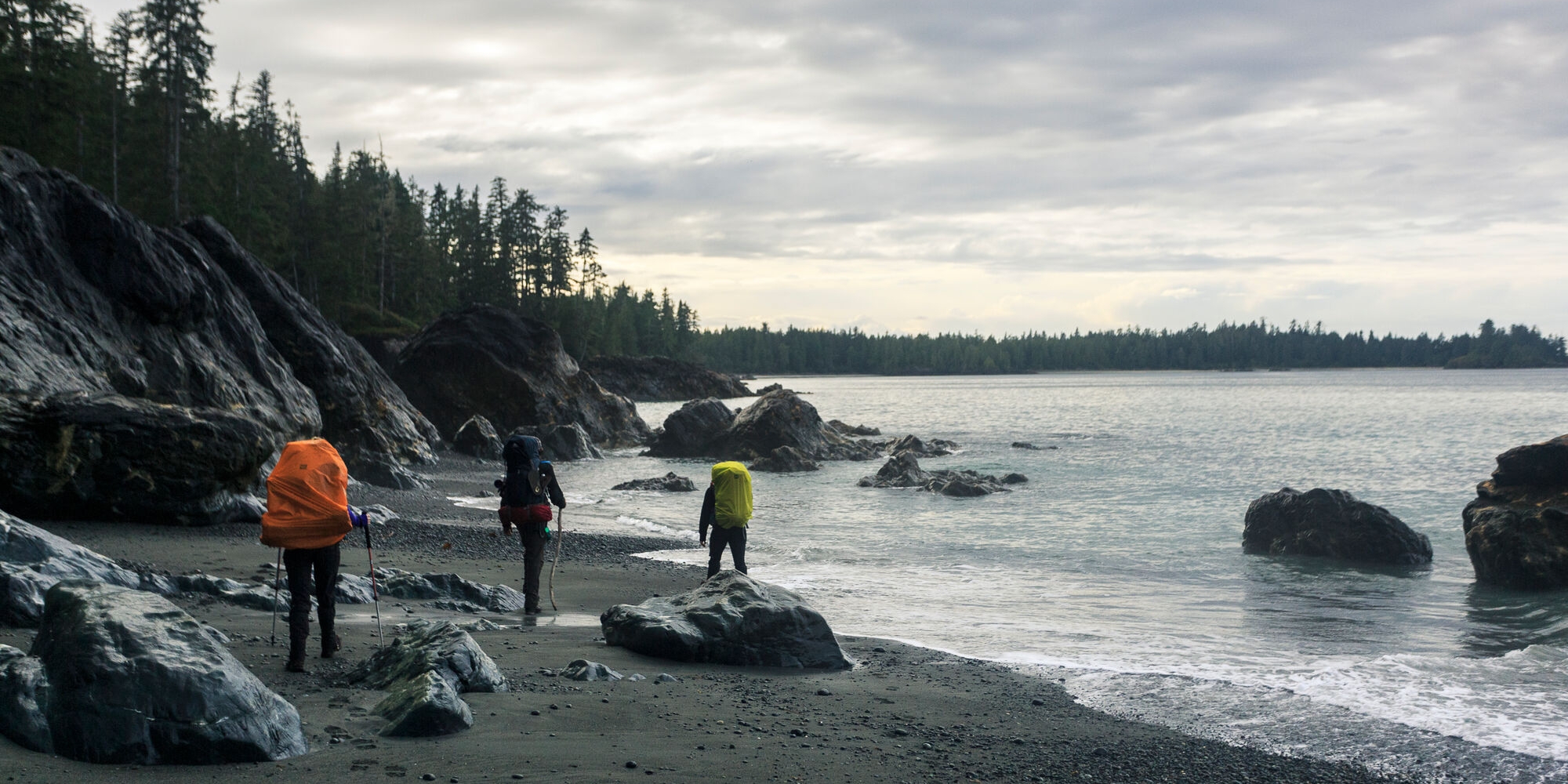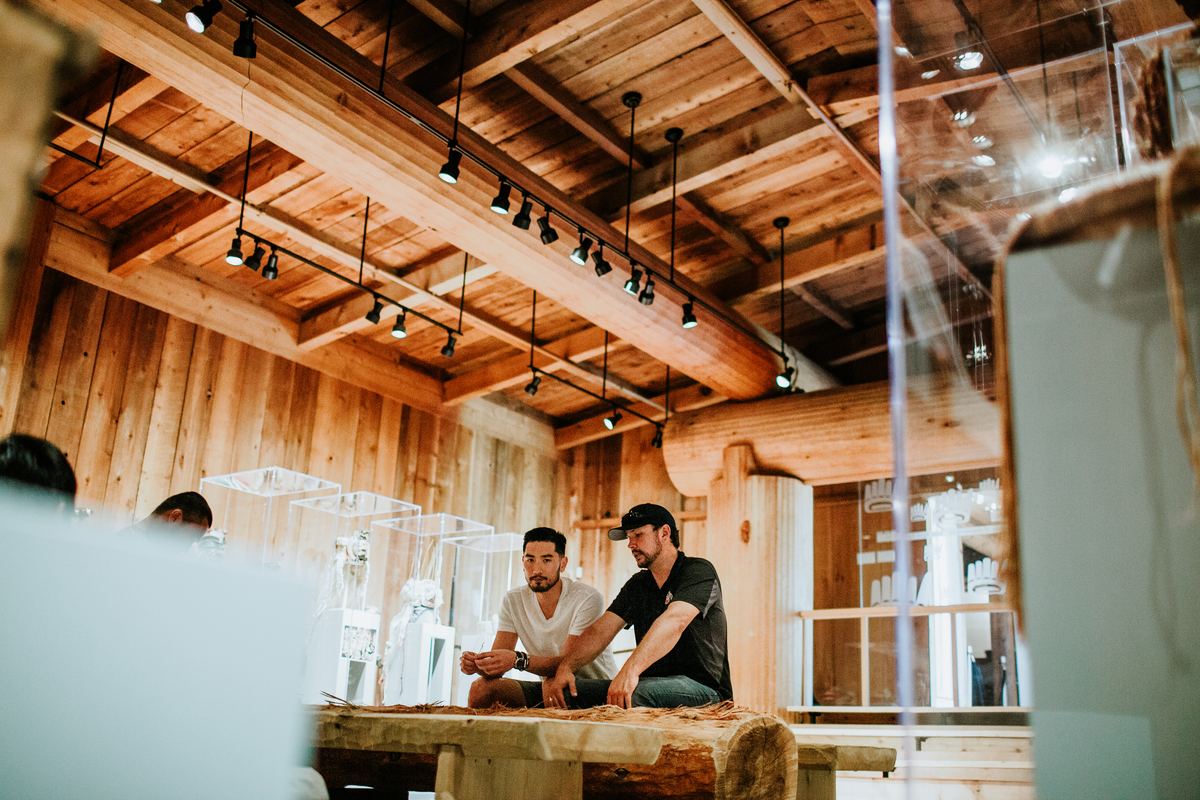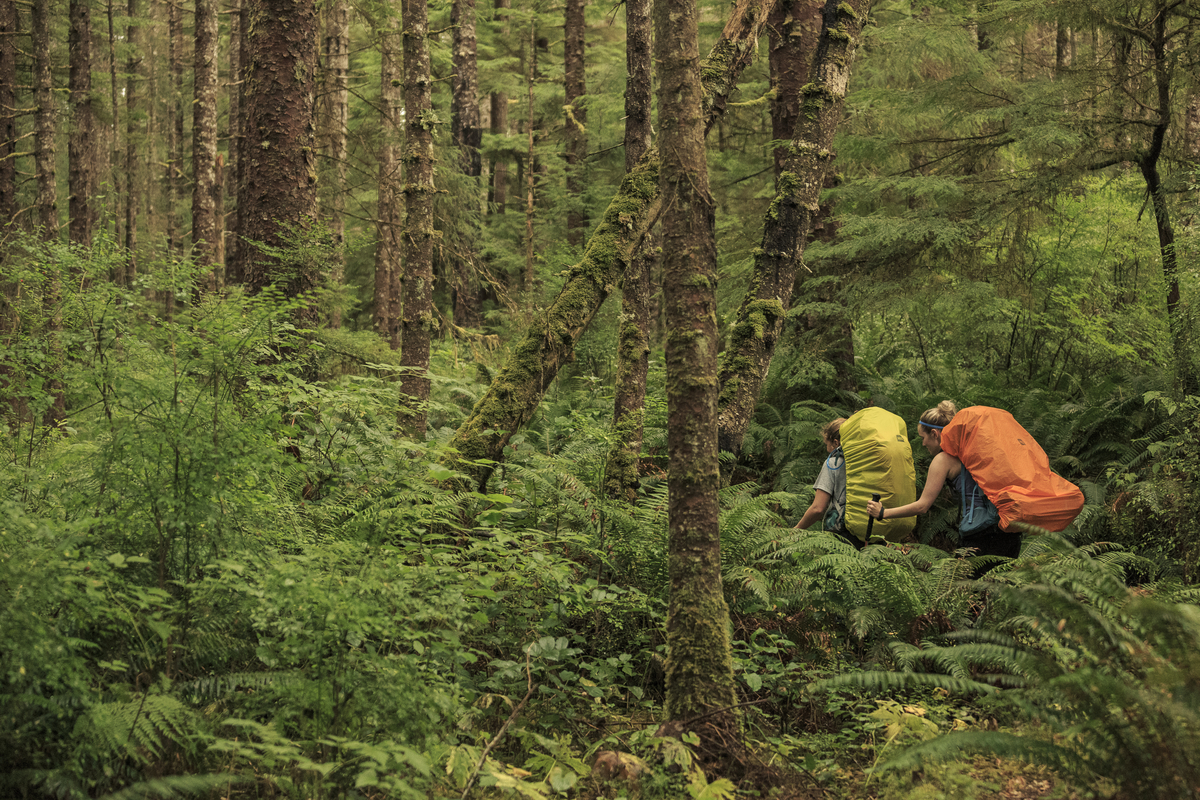The key to enjoying the beauty of the outdoors, from cascading waterfalls to towering old-growth rainforests, is leaving each place better than you found it. Take out everything you bring in and minimize your impact on natural spaces. Protecting these dynamic environments now means they will be available for generations to come.

With an abundance of wildlife and untouched wilderness, Vancouver Island North offers travellers an extraordinary opportunity to be immersed in nature. As you explore the pristine landscape, the importance of stewardship and conservation of the land, the water, and the local and cultural traditions becomes clear. And as visitors who seek to connect with nature, it is our responsibility to protect and preserve it by committing to travelling with a focus on sustainability.
Vancouver Island North’s Wild Pledge is a promise to protect the unspoiled beauty and history of this region by practicing responsible tourism, and to travel with care when visiting the communities, businesses, and natural landscapes of this region.
#1: Leave no trace when exploring our beaches, forests, & land

How to leave no trace
Reduce plastic waste: Use reusable containers whenever possible. The restaurants and cafes in the region, such as local favorite Cafe Guido, are happy to accommodate your reusable bottles and coffee cups. You can even order a to-go sandwich from their deli in your own container to enjoy later on the trail. Pack your own cutlery, as well as steel or bamboo straws.
Avoid taking natural objects or species: Leave shells, sand, rocks, sticks, etc., as well as any creatures, dead or alive, where you find them. For example, explore Storey’s Beach at low tide and search for treasures, but take only pictures and memories when visiting these spectacular ecosystems.
Minimize campfire impacts: When fires are permitted in areas like Cape Scott Provincial Park, ensure your fire is fully extinguished before you leave it, pack out all unnatural material, and limit any use of chemical fire starters when building fires in wilderness areas.
Avoid building new structures or trenches: To keep nature truly untouched, it’s best to stick to the simple principle of “leave it how you found it.”
#2: Encourage the celebration of local cultures, traditions, & heritages

As you travel with intention through British Columbia, you begin to notice that everything around you is connected. That the natural elements—the water, the land, and the wildlife—and the human elements—the culture, the traditions, and the history—are inextricably linked, and learning from the Indigenous peoples who’ve inhabited the Island for thousands of years is an essential part of your travel experience.
How to celebrate local cultures and traditions
Observe: Look but don’t touch any cultural or historical artifacts, art, or structures as you travel. For example, observe some of the local Indigenous art that can be found throughout Vancouver Island North. The world’s tallest totem pole is located in Alert Bay, representing the Kwakwaka’wakw peoples who call the region home.
Knowledge is power: Leave any biases and preconceptions at home, and travel with an open mind. Do some research to better understand local customs, cultural nuances, and ways of life that may be different from your own. Indigenous-owned businesses in the area are the experts in the historical traditions and living cultures of their people. U’mista Cultural Centre in Alert Bay is an excellent place to start, and you can learn about other Indigenous-owned businesses and cultural locations on Indigenous Tourism BC’s website.
Photograph with respect: When visiting any cultural monument, museum, art gallery, or historical location, ensure that you have consent before capturing an image and/or sharing one. If you have questions about what’s appropriate to share, stop by one of the Island’s many Visitors Centers for some guidance.
#3: Observe and do not disturb our wildlife & natural habitats

Commitment to being a more sustainable traveller means respecting all of a region’s inhabitants, from humans to flora and fauna. When you are travelling through the forests and along the trails and coastlines of Vancouver Island North, make sure you are not disturbing any wildlife or habitat around you.
How to respect local wildlife
Follow local regulations: Rules are in place to protect the environment, as well as the wildlife and the people who call this area home. Educate yourself before you set out into the wild, for example by visiting the Quatse Salmon Centre, located in Port Hardy. This facility is dedicated to salmon conservation, enhancement, and education on North Vancouver Island, and it is an excellent place to learn about the salmon’s connection to the rest of the coastal ecosystem.
Observe wildlife from a distance: Always keep a safe and respectful distance from wildlife, and never approach or follow any animals you may encounter while exploring. The best way to observe wildlife is with a reputable local tour operator who knows where to find the animals and how to view them safely. Sea Wolf Adventures is an Indigenous-owned company that organizes grizzly viewing tours, boat trips in search of marine animals, and other culture-focused adventures throughout the region.
Never feed animals: The saying is true, sadly—a fed bear is a dead bear. An animal that becomes used to human intervention will naturally seek out humans, so it’s imperative that you refrain from feeding any animals, including birds or fish.
Store food securely: There are several bear caches available along popular trails, including in Cape Scott Provincial Park, but if there are no bear caches where you are hiking or camping, it’s your responsibility to know and follow food and trash storage guidelines.
#4: Support local lives by eating, staying, & shopping locally

Spending money in a community is the best way to support its economy, but did you know that shopping local has a significant environmental impact as well? When you buy from local artisans and business owners, you significantly reduce your carbon footprint and help minimize pollution. It’s also a great way to connect with locals and to find off-the-beaten-path places.
How to support local
Choose locally owned accommodations: Staying in locally owned and operated accommodations, including campsites, is a great way to engage with the community. Not only are you directly contributing to the local economy, but you have access to a resident’s insight and perspective, which can lead you to experiences you might not otherwise have had. For example, Cluxewe Resort is an Indigenous-owned campground, RV park, and resort located just outside of Port McNeill.
Support local experience providers: Vancouver Island North is home to myriad local tour operators that have first-hand knowledge and expertise, which adds depth and richness to the tours they lead. For example, K’awat’si Tours offers eco tours and Indigenous cultural experiences in Port Hardy. Taking one of their tours is a great way to build a connection to the deeply rooted Indigenous cultural traditions that are such an integral part of this area.
#5: Prepare for any experience in our trails, mountains, & waters

Preparation is an incredibly important part of any visit to Vancouver Island North. Because of its coastal climate and rugged terrain, it is vital that you come prepared for all forms of weather—unexpected storms are common, especially in the winter months. In addition, there are several trails that traverse areas with no cell phone service, so having a communication plan in place is imperative.
How to prepare for outdoor adventure
Prepare for extreme weather: The weather in this region can be unpredictable and dramatic. A rainstorm can quickly turn torrential, so it’s essential that you pack plenty of weather-appropriate gear when participating in any outdoor activity.
Prepare for emergencies: Always have a contingency plan in place in case something goes wrong, and never venture off marked trails. Ensure that someone at home knows what your plans are in case of an emergency, and when you’re travelling somewhere with limited cell service.
Always read the signs: Cautionary signs, including tide charts and recent wildlife sightings, are often posted at a trailhead. Always read any bulletins before embarking on a trail.
Bury human waste: Ensure that you bury solid human waste in holes 15- to 20-cm deep, and at least 70 m away from water, campsites, or trails.
#6: Share the trails, roads, routes, & parking areas

John Muir once wrote, “In every walk with nature, one receives far more than he seeks.” On Vancouver Island, the sentiment rings true. The best and most lasting memories are often the ones you don’t expect, and travelling slowly, with intention, is the most effective way to experience all that a destination has to offer.
How to travel with intention
Reduce your carbon footprint by walking more: Because Vancouver Island North is situated in the heart of the wild, there are plenty of trails that are easily accessible from the town centres of Port McNeill and Port Hardy. Don’t miss the Port Hardy Seawall at low tide, with an abundance of visible sea life.
Explore by bike and public transport: Biking and public transportation are excellent ways to experience a destination the way the locals do. One must-do option is to take BC Ferries from Port McNeill to Sointula on Malcolm Island for a self-guided adventure. Weather permitting, you can walk onto the ferry from downtown Port McNeill and borrow one of the free bikes available at the Sointula Resource Centre to travel around the island.
Be courteous of others: Be respectful of others when you’re hiking the trails around the region, especially during the busy months of summer. Camp respectfully and maintain your distance from other travellers so that everyone has an equal opportunity to enjoy their own experience with nature.
These six principles work together to encourage thoughtful travel to and around Vancouver Island North. Taking the Wild Pledge gives you concrete ways to enjoy nature with an open mind, a commitment to protecting its unsurpassed beauty, and the tools to be able to travel more sustainably. Now it’s time to explore the North Island, and take the North Island Wild Pledge.

